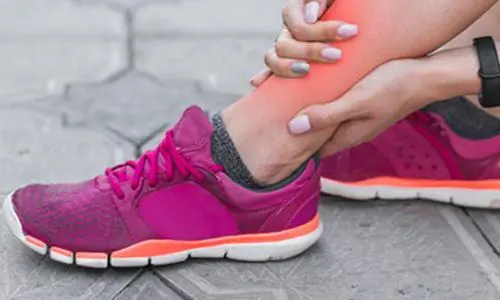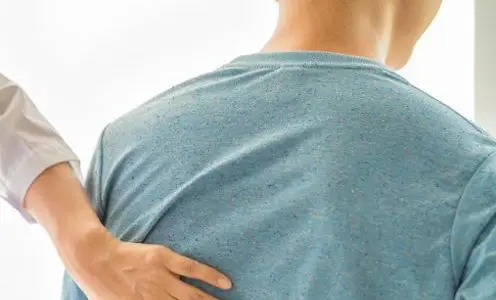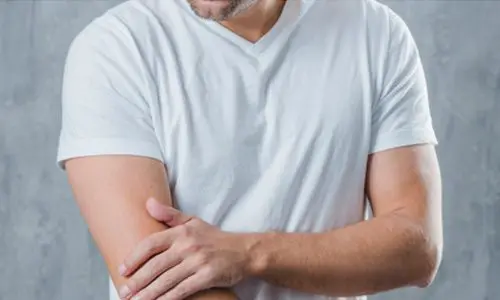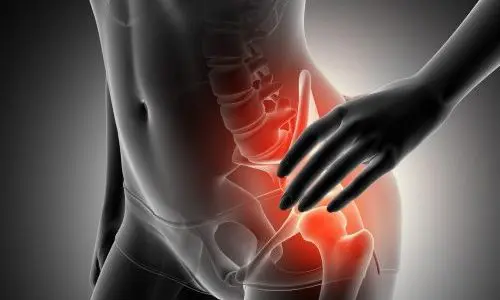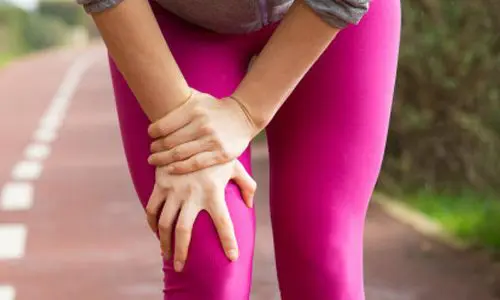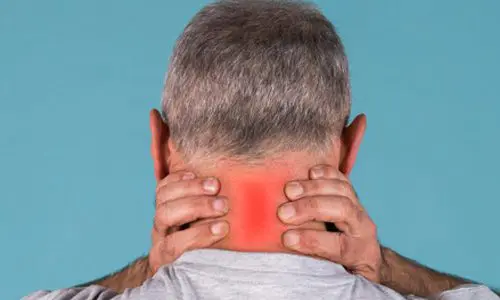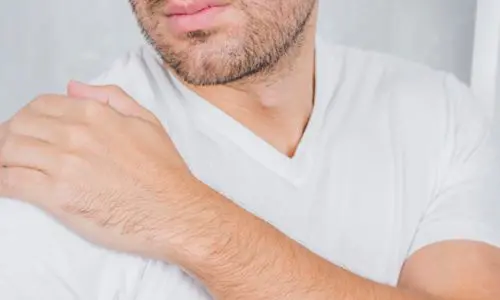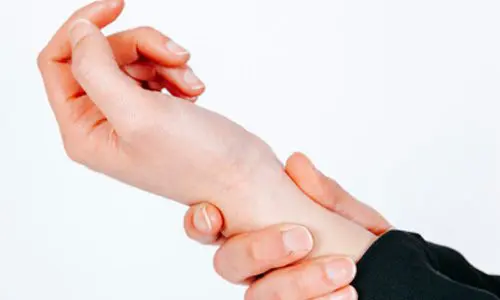Conditions We Treat at Our Office
After an initial consultation and evaluation, we will provide you with a structured and comprehensive treatment plan to eliminate your pain and restore your mobility for a wide variety of conditions and illnesses associated with your musculoskeletal system:
Foot and Ankle Pain
✓ Plantar Fasciitis
The plantar fascia is the fibrous band of tissue that connects your toes to your heels. If you’re experiencing heel pain, you may have an inflammation of your plantar fascia. Most common in the morning, this pain feels like a shooting pain and may be triggered by standing after an extended state of sitting.
Often times, this pain is the result of excessive stretching of the plantar fascia. Also, if you have flat feet, you could be at risk of developing plantar fasciitis. Other common causes include a sudden increase in physical activity or wearing ill-fitting footwear. This condition is common and treatable once the source of pain is determined.
✓ Achilles Tendonitis
The Achilles tendon is the band of tissue that connects your calf muscle to your heel bone. It can be injured through overuse, including activities that require a lot of stop and go motion. Another common cause is overpronation- when the arch cannot support the weight that is being placed on it, leading to stress of the arch. If left untreated, your Achilles tendon may rupture; it is imperative to treat it before it worsens.
✓ Heel Spur
Commonly associated with Plantar Fasciitis, a heel spur occurs when extra calcium deposits at the heel of your foot, resulting in an extra bone or “hook”. If you are experiencing a sharp pain in your foot when you first stand up in the morning or after standing, then you may have a heel spur.
✓ Flat Feet
Quite common and usually painless, this condition occurs when the arch in your foot is flat, enabling the sole of your foot to touch the floor when you are standing on a flat surface. If the pain doesn’t stem from the natural mechanics of your body, then it can occur from overuse or injury.
✓ Ankle Sprain
An ankle sprain occurs when you have a twisted or torn ligament. These injuries can take place if you suddenly shift your foot and your ankle moves outward while your foot moves inward; this stretches and tears the ligaments outside your ankle. It is crucial to properly treat the sprain to ensure that it heals correctly. Otherwise, re-injury may occur or chronic pain may arise due to an unstable.
Back pain
Most lower back pain can be treated without the means of surgery; these include the following:
✓ Herniated Disc
Your spine is cushioned by sponge like discs that act like shock absorbers. When a portion of the gel-like center of the disc has migrated through the annulus fibrosus, or the outer layers of the disc, either via natural wear or injury, herniation occurs. When this takes place, pressure is then placed on the surrounding structures, triggering inflammation and pain. If left untreated, physical disability may occur. If you are experiencing pain from a herniated disc and are seeking relief, you may be a candidate for our DRX9000 machine, a non-invasive approach to treating herniated disc conditions.
✓ Sciatica
When an injured disc pushes against the spinal nerve which leads to the sciatic nerve, a shock-like pain is often produced down your lower back and along your legs. Typically, it only affects one side of the body and the pain may range from a mild, numbing pain to a feeling of intense electric shock. This pain may also occur suddenly or develop over time. Sciatica is one of the most common symptoms for a herniated disc.
✓ Degenerative Disc
The main function of a disc is to resist and distribute mechanical loads. When discs suffer from dehydration and deteriorate, they become more susceptible to injuries. This condition could also occur from natural wear and tear and from aging. The pain that occurs often depends on the location of the affected disc. Physical therapy is a commonly recommended treatment and the DRX-9000 can also play a major role in recovery.
✓ Spinal Stenosis
When the open spaces between the spine narrow, more pressure is placed on your spinal cord, causing pain between your neck and lower back. While this may be due to the natural spine structure that you were born with, there are a number of other factors that contribute to the narrowing spaces between your spine; these include bone overgrowth, herniated discs, and tumors.
✓ Osteoarthritis
Osteoarthritis is the most common form of arthritis and is commonly known as “wear and tear” arthritis. Cartilage, the firm tissue that surrounds your bones, enables for smooth joint motion. Osteoarthritis is a degenerative disease that occurs when the protective cartilage surrounding your bones wear. As the cartilage deteriorates, the tendons and ligaments stretch and, even worse, your bones may rub against other bones. While there is no cure at the moment, we will provide you with a treatment plan to relieve your pain and improve your joint function.
Elbow Pain
Elbow pain may be caused by a variety of conditions and illnesses. Below are some of the most common:
✓ Tennis Elbow
Tennis elbow is a form of tendonitis that occurs as a result of an inflammation of the tendons and forearm muscles that are attached to the outside part of the elbow. The condition arises from the repeated contraction of the forearm muscles which causes tiny tears in the tendons. The elbow may be tender to the touch and pain may radiate down your forearm and wrist from activities that cause stress to the tendon, such as gripping or lifting.
✓ Golfers Elbow
Pain from Golfers Elbow is generally on the inside of the forearm, rather than the outside as it affects the tendons on the inside of your elbow. Despite its name, anyone may be affected by this condition. Repetitive motion, in which you are constantly lifting or bending and straightening your elbow, can bring on the pain.
✓ Bursitis
Bursitis is the irritation and swelling of the bursae, the small fluid filled pads which cushion your bones, tendons and muscles. It is common in the elbow and shoulder, although it can occur anywhere in the body.
Hip Pain
Hip pain can come from the inside of your hip joint, the outside of the hip joint, or from other parts of the body. Below are some of the most common causes of pain:
✓ Arthritis
Arthritis, which is an inflammation of one or more of your joints, affects the musculoskeletal system and is the most common cause of hip pain. There are several types of arthritis, including Rheumatoid arthritis and Osteoarthritis. You may have arthritis if you have pain, swelling and stiffness around your joints.
✓ Snapping Hip Syndrome
Like its name, snapping hip syndrome is a condition that creates a popping noise when you get up and move your hips due to the movement of a tendon or muscle over a bone structure in the hip. The snapping noise can also occur due to broken cartilage or a cartilage tear. While anyone can develop this condition, it is more common in athletes and dancers.
✓ Trochanteric Bursitis
Bursitis is an inflammation of the small sacs of fluid (bursae) that cushion and lubricate the areas between tendons and bones. The trochanteric bursa separates the greater trochanter of the hip and the muscles and tendons of the thighs and buttock. It can be caused by an acute injury, prolonged pressure on a bursa, or activities that require repeated twisting or rapid joint movement (such as jogging or bicycling long distances). It may also occur as a result of limping due to pain in other areas such as the knee or ankle. These activities may lead to irritation or inflammation within the bursa. Trochanteric bursitis may occur together with disc disease of the low back or arthritis of the hip. It also may develop along with iliotibial band syndrome.
Knee Pain
Knee pain may arise from a variety of conditions and diseases. Below are the most common conditions:
- Anterior Cruciate Ligament ACL Tear
An ACL tear injury occurs when the Anterior Cruciate Ligament inside your knee joint is torn, overstretched or injured. A tear may be partial or complete.
- Runner’s Knee
When the kneecap is misaligned or out of place, it can irritate the femoral groove and wear away the cartilage underneath the patella and joint lining. When this occurs, the condition is called Runner’s Knee. The repetitive force from running (especially downhill), tight or weak muscles, excessive bending and use of the patella, as well as body mechanics like weak hips and flat foot places extra stress on the patella and causes pain around the kneecap.
✓ Pre-Patellar Bursitis
Pre-Patellar Bursitis is an irritation of the bursa located right in front of the kneecap. This inflammation of the bursa leads to swelling and pain of the kneecap.
✓ Iliotibial Band Syndrome
Iliotibial Band Syndrome (ITBS) occurs when the iliotibial band, the ligament that runs down the outside of the thigh from the top of the hip to the outside of the knee, is inflamed or tight. It is a very common cause of pain on the outside of the knee. It occurs frequently among runners and cyclists due to repetitive knee flexion and extension. ITB syndrome can result from any activity that causes the leg to turn inward repeatedly. This can include wearing worn-out shoes, running downhill or on banked surfaces, running too many track workouts in the same direction, or simply running too many miles.
✓ Meniscus Tear
The Meniscus is a rubbery, C-shape cartilage that cushions the knee between the femur (Thigh bone) and tibia (Shin bone). Each knee has two menisci-one at the outer part of the knee joint and one at the inner part. A meniscus tear is usually caused by a quick twisting or turning on the leg, commonly with the foot planted and the knee bent. Tears occur easier when the meniscus is worn out as we get older. Meniscus tears usually present with swelling, pain, stiffness and decreased range of motion. In more severe cases, the knee may even catch, pop, lock or even feel wobbly. The pain and symptoms may come and go for years if the tear is not treated.
Neck Pain
✓ Cervical Herniated Disc/Bulging Disc
When healthy discs become damaged or ruptured, they become herniated causing extreme pain and discomfort. Healthy discs may break or fragment due to natural age and wear, or pressure or injury to the spine or nerves. If you are experiencing pain from a herniated disc and are seeking relief, you may be a candidate for our DRX9000C machine, a non-invasive approach to treating herniated disc conditions.
✓ Cervical Stenosis
Cervical Stenosis occurs as a result of the compression of your nerve roots due to the spine narrowing. It is usually caused from natural aging and changes to the spine. Conditions that can lead to cervical stenosis include bulging discs as well as excessive growth of the bones.
✓ Cervical Osteophyte
Cervical Osteophytes, or bone spurs, occur as a result of damaged tendons and ligaments surrounding the joints and bones; the damaged tissue can elicit bone growth and bone deposits where they should not normally appear. Complications can occur if the bone growth intrudes on the nerves or impedes on the vertebral discs.
✓ Cervical Osteoarthritis
Cervical Osteoarthritis stems from natural wear and degeneration of discs. If you have pain, stiffness or pain that radiates through the shoulder, you may have arthritis of the neck.
Shoulder Pain
Did you know that the most commonly injured joints in the body are in your shoulder? Due to its natural structure, your shoulder is the most mobile but unstable joint. Anyone is susceptible to developing problems due its instability; below are some of the most common conditions:
✓ Rotator Cuff Tendinitis
Rotator cuff tendinitis is often referred to as impingement syndrome. The rotator cuff is comprised of four tendons which hold the bones of the shoulder joint together and provides you with the mobility and function of your arm. If you have rotator cuff tendinitis then you have an inflammation of the tendons, which usually results from repetitive irritation.
✓ Rotator Cuff Tears
A rotator cuff tear may occur in any of your four tendons. Most commonly, however, due to its position, the supraspinatus tendon is usually the one affected as it sits on top of your shoulder blade and assists with lifting your arm out and away from your body. There are two ways in which a rotator cuff tear may arise. If your arm suddenly moves while stretched out, such as when you are lifting something, you may suffer from an acute tear. A chronic tear, on the other hand, usually occurs in someone suffering from chronic impingement syndrome. In this case, the tendon will eventually tear from the gradual wear of your rotator cuff tendons and muscles. Usually, tendon tears occur from chronic overuse and develop over time
Wrist/Hand Pain
✓ Carpal Tunnel
Your median nerve runs from the forearm into the palm of your hand and controls sensations through the fingers and the impulses to muscles which enable movement in the hand. When the median nerve is repetitively squeezed at the wrist, carpal tunnel occurs. This results in pain, numbness and weakness at the wrist and through the arm.
✓ Wrist Sprain
When an excessive force is placed on the wrist, injury can occur from the tearing or stretching of ligaments in the wrist. There are three types of sprains: Grade I is a stable injury to the ligament; Grade 2 is a partial tear or stretch of the ligament; Grade 3 is a complete tear of the ligament.
✓ Arthritis of the hand
A joint consists of two smooth cartilage-covered bone surfaces that move smoothly over one another. Hand arthritis stems from a degradation of the cartilage or an inflammation of these joints. As these cushioning surfaces of the cartilage wear out, pain often arises, causing swelling and stiffness. In an attempt to make up for the lost cartilage, your body will produce fluid to act as a cushion for your joints. This excess fluid can cause swelling and can be very uncomfortable and disabling.
Midtown
Empire Physical Medicine & Pain Management
646-665-7109
Downtown
Empire Physical Medicine & Pain Management
646-665-7109
Visit The Best Physical Therapists In NYC To Alleviate
Your Pain Today!
Midtown
Empire Physical Medicine & Pain Management
7 West 45th St. Floor 9,New York, NY 10036
646-665-7109
Downtown
Empire Physical Medicine & Pain Management
65 Broadway, Suite 603, New York, NY 10006
646-665-7109
Empire Physical Medicine has been treating me for injuries to my legs. They have provided me with the best treatment of all the places I have tried since my injury in 2018. The medical staff is both knowledgeable but also exceedingly kind and a great source of motivation.
Lee A.
Excellent! I had a really bad tendon pain and guess what happened, It got easily handled! The doctor is really cool, the premises are spacious and luxurious.
Anatoly K.
My experience at Empire Physical Medicine has been very positive. The personalized treatment for my shoulder issues has produced results I am very pleased with. The PT I work with has a clear plan to resolve the issue with my shoulder and it is working.
Richard C.
I am patient of Dr.Moalemi from 2012. He has great skills of trustworhtiness, explain conditions well, answers questions, time well spent. Besides, his office staff is very friendly.
Natalia W.




